XRD work is categorized into two major groups. Single crystal and powder analysis. While single crystal work is usually highly customized to particular applications and involves a largely unique hardware set, powder (PXRD) work covers a broad range of applications. Many of which can be performed without any special hardware at all. Perhaps it would be more accurate to call it “Randomly oriented small particle” diffraction. Somehow I think “ROSPXRD” would be slow to catch on. At the risk of oversimplifying the options, I’d like to take a few posts to showcase some of the more common analyses which can be performed with a basic PXRD system and perhaps a few that require minimal additional attachments.
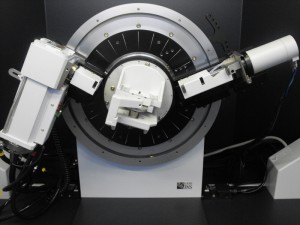
This is an example of a Bruker D8 Advance configured in its most basic PXRD state with only a scintillation counter, sample stage and source.
This is the same D8 base instrument configured for single crystal XRD. Note the Chi, phi, XYZ stage, area detector (2D) and Goebel focusing mirrors.
My last post involved a basic phase identification and this seemed like a great place to start. Most PXRD users are asked to identify some unknown bit of corrosion, rock or contaminant at some point. I once took a shot at something which later turned out to be sewage sludge ash. I have no idea what they hoped to find in that. Exotic, mundane or distasteful, the most basic XRD can collect the necessary data to perform this analysis. Phase ID is usually the first step most users take toward more advanced software. In addition to the simple pattern analysis features that usually come standard, you’ll need an engine designed to search one of the many commercial or open-source databases available. The ICDD, NIST and AMCSD are probably the most popular with several others on the fringe. There are even user-developed databases which are usually compiled in a particular lab to cover the range of phases they expect to see based on their product or application.
Limiting the search to categories of phases which are likely to be present greatly improves the relevance of the results list. There’s obviously no reason to search through a huge list of minerals when trying to identify a metallic oxide coating. Hit lists can also be refined based on data from other sources such as qualitative elemental analysis. We use our WDXRF systems and the built in elemental filter in Jade to trim the options substantially.
Any good search/Match engine will have support not only for multiple databases, but also offer the option to limit your search to certain subfiles which are group my material categories.
Semi-quantitative or simple qualitative elemental data can be used to eliminate a large percentage of erroneous hits so the analyst can focus on only pertinent options. We prefer to bundle an XRF scan with any Phase ID project.
Isolating the valid hits from erroneous is where experience comes into play. Non-ideal particle size, preferred orientation and crystallographic imperfections can make the process quite difficult. Relative peak intensity ratios, peak width and sometimes even the complete absence of a particular peak which would theoretically be present all present opportunities to gain additional insight. Sometimes this is relatively easy as in the case I presented in the previous post, but other situations are not so simple. These difficulties are amplified in the case of low concentrations and complex mixtures.
This is a great example of Phase ID the way we all wish it came out. The peaks are sharp, intense and located right on their theoretical angle.
This is an example of something a little harder to nail down. Overlapping peaks, several additional phases and a highly imperfect sample. Refining the options based on external measurements and in depth sample prep make the difference between success and failure in cases like this.
XRD pattern analysis has come along way in the last 40 years and most of the major improvements have come on the heels of increased computing capability which enables us to perform exhaustive iterative calculations on complex patterns quickly and at comparatively low cost. However, there is nothing on the market as of now which has made an experienced analyst obsolete.

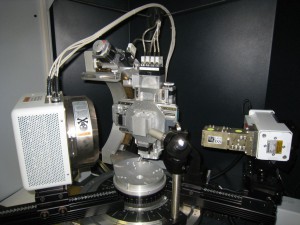
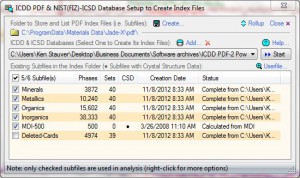
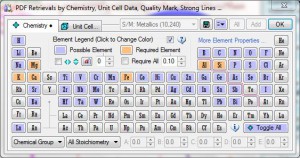
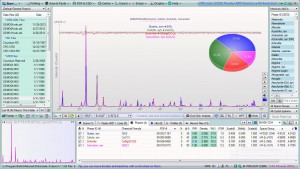
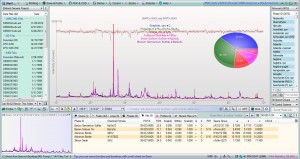

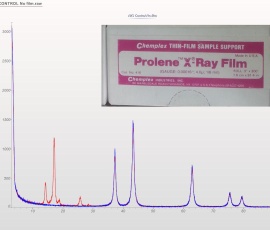
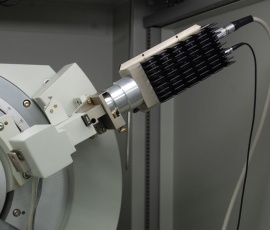

Sorry, the comment form is closed at this time.